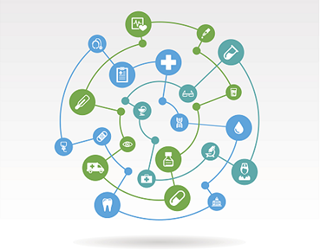How To Help Your Health IT Clients Address Meaningful Use 3 With Beacon Technology
By Megan Williams, contributing writer

As the healthcare industry shifts, many hospitals are left facing the triple threat of rising costs, increased security risks, and federal mandates to move to value-based care models. While it’s obvious that technology will play an integral part in addressing that challenge, it can be incredibly difficult finding solutions that will address all three elements simultaneously.
One solution that your clients likely haven’t considered is beacon technology. Beacon tech (Bluetooth low energy) holds myriad benefits for healthcare, specifically around addressing security and efficient patient care, at costs that are notably lower than similar solutions (i.e., RFID).
Beacons And MU Stage 3 Objectives
Many of the objectives of Meaningful Use (MU) stage 3, while rooted in tech solutions like EHRs (electronic health records) and patient portals, will require priming a patient who is willing and excited to cooperate with providers in their care processes. A key element of this is simplifying the patient experience at the time of care. Beacon technology can address this in two ways:
- Shortening clinician wait times
- Improving the facility navigation process
Patients who are frustrated waiting on doctors to be located are patients who will be less willing to engage with a portal after they have left a facility. Beacon technology gives nurses the ability to quickly and easily locate staff, eliminating the need for the paging process and cutting down on the time needed to locate physicians in an emergency situation. This also brings the added benefit of improved emergency response times.
In terms of facility navigation, beacon-powered apps can be used in various applications where solutions such as GPS fail. This includes implanting beacons throughout a facility to aid visitors (or temporary staff) in navigating often-confusing hospital layouts.
Which Hospitals Are Best Suited For Beacon Tech?
While it’s likely that any hospital has something to gain from implementing beacon technology, larger sites stand the most to gain. According to Michael Carne, VP of sales and partnerships at Lighthouse, an enterprise beacon management platform, “Typically larger sites with commonly shared resources stand to gain the most from beacon tech. Once beacons have been deployed, they can be leveraged for multiple purposes. As such, the more users — be they staff, patients or even assets — the higher the return on investment.”
To get started, Carne recommends conducting a pilot in a single facility first to test the value of the technology, customize the solution to meet facility needs, and give time to understand other impacts. Once the ROI is demonstrated, he then recommends a phased implementation approach.
Beacon solutions are also a particularly strong compliment to the cloud initiatives that are already established in many facilities as solutions to security, cost, and efficiency concerns.
The Future Of Beacon In Healthcare
The beacon technology market is expected to grow in healthcare in significant ways through 2019, driven primarily by the growth of BYOD policies and the Internet of Things increasingly impacting the healthcare sector.
According to Carne, “There are significant opportunities for leveraging beacon technology in health … it allows hospitals to improve the experience of employees and patients while reducing general operating costs.”
